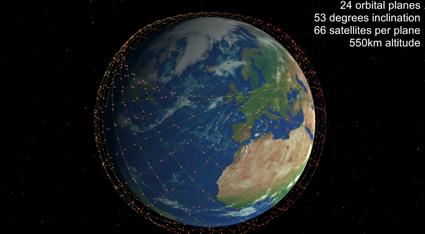London: The European Space Agency (ESA) has somehow averted a cosmic crash by protecting one of its satellites from colliding with a SpaceX satellite part of Elon Musk’s mega ‘Starlink’ constellation.
In a series of tweets, ESA informed that it had to perform an emergency ‘collision avoidance manoeuvre’ to stop its Aeolus Earth observation probe from smashing into one of the SpaceX satellites.
The two spaceships were on the other side of Earth from one another when ESA operators realised that a cosmic crash was possible, reports Metro.
Musk intends to put 12,000 satellites into the Earth’s orbit so they can provide cheap Internet to areas of the planet where broadband is rare, spotty or non-existent – a move met with criticism that there would be too much space junk in Earth’s orbit.
“This morning, @ESA’s #Aeolus Earth observation satellite fired its thrusters, moving it off a collision course with a @SpaceX satellite in their #Starlink constellation,” ESA tweeted Tuesday.
“Experts in our #SpaceDebris team calculated the risk of collision between these two active satellites, determining the safest option for #Aeolus would be to increase its altitude and pass over the @SpaceX satellite,” the space agency added.
It is very rare to perform “collision avoidance manoeuvres” with active satellites.
“The manoeuvre took place about 1/2 an orbit before the potential collision. Not long after the collision was expected, #Aeolus called home as usual to send back its science data – proving the manoeuvre was successful and a collision was indeed avoided,” the ESA further tweeted.
Musk was yet to tweet on this.
In July, SpaceX lost control of three of Starlink satellites, which met a fiery end in the Earth’s atmosphere.
In May, SpaceX’s fifth Falcon 9 rocket sent 60 Internet-beaming Starlink satellites into space.
Getting the full constellation up and running will cost in the ballpark of $10 billion, and Musk has conceded that such efforts have bankrupted others, such as the satellite operator Iridium.
SpaceX will need another six missions, according to Musk, before Starlink can provide consistent Internet coverage for small parts of the world.
It will take 12 launches before the company can provide coverage for a significant portion of the world’s population, he added.
(IANS)
